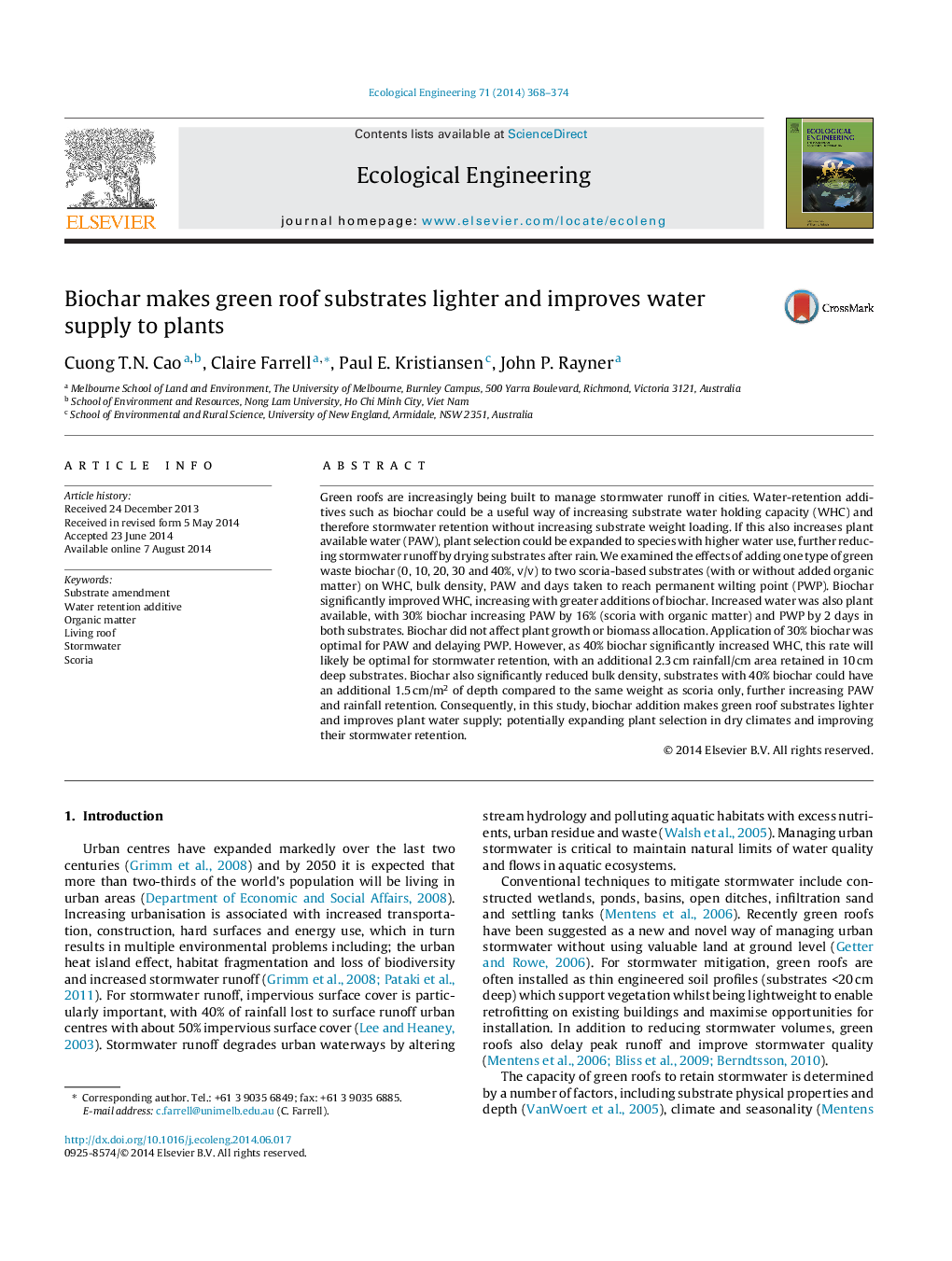| Article ID | Journal | Published Year | Pages | File Type |
|---|---|---|---|---|
| 4389173 | Ecological Engineering | 2014 | 7 Pages |
Abstract
Green roofs are increasingly being built to manage stormwater runoff in cities. Water-retention additives such as biochar could be a useful way of increasing substrate water holding capacity (WHC) and therefore stormwater retention without increasing substrate weight loading. If this also increases plant available water (PAW), plant selection could be expanded to species with higher water use, further reducing stormwater runoff by drying substrates after rain. We examined the effects of adding one type of green waste biochar (0, 10, 20, 30 and 40%, v/v) to two scoria-based substrates (with or without added organic matter) on WHC, bulk density, PAW and days taken to reach permanent wilting point (PWP). Biochar significantly improved WHC, increasing with greater additions of biochar. Increased water was also plant available, with 30% biochar increasing PAW by 16% (scoria with organic matter) and PWP by 2 days in both substrates. Biochar did not affect plant growth or biomass allocation. Application of 30% biochar was optimal for PAW and delaying PWP. However, as 40% biochar significantly increased WHC, this rate will likely be optimal for stormwater retention, with an additional 2.3Â cm rainfall/cm area retained in 10Â cm deep substrates. Biochar also significantly reduced bulk density, substrates with 40% biochar could have an additional 1.5Â cm/m2 of depth compared to the same weight as scoria only, further increasing PAW and rainfall retention. Consequently, in this study, biochar addition makes green roof substrates lighter and improves plant water supply; potentially expanding plant selection in dry climates and improving their stormwater retention.
Related Topics
Life Sciences
Agricultural and Biological Sciences
Ecology, Evolution, Behavior and Systematics
Authors
Cuong T.N. Cao, Claire Farrell, Paul E. Kristiansen, John P. Rayner,
